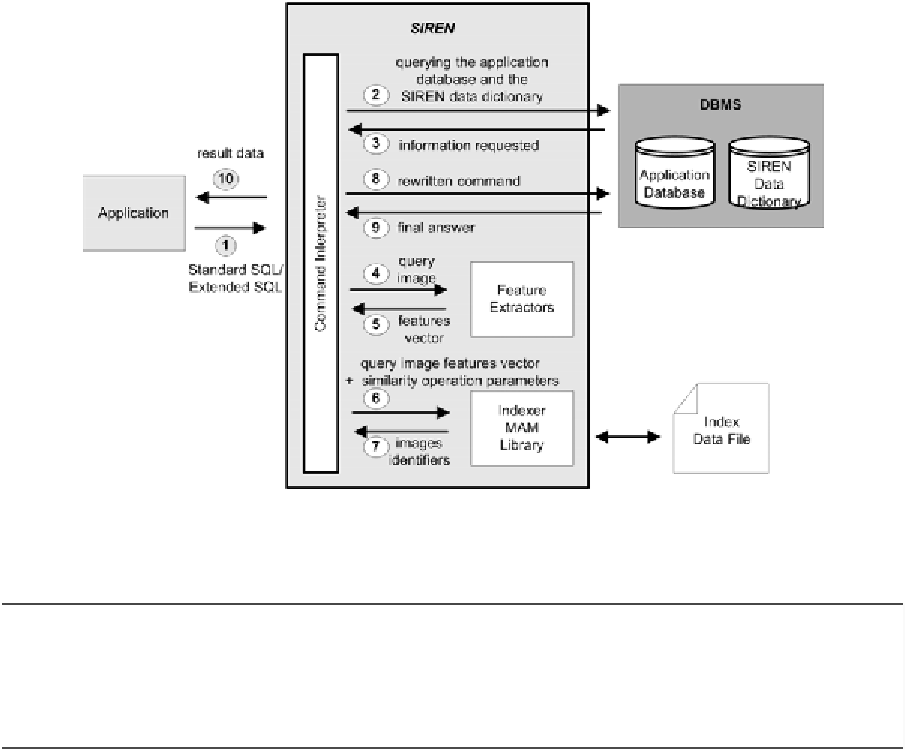Database Reference
In-Depth Information
Figure 4. An example of the command execution process in SIREN
Algorithm 15.
SELECT Id, Place, Photographer, IPV$Landscapes_Picture.Image AS Picture
FROM Landscapes JOIN IPV$Landscapes_Picture
ON Landscapes.Picture = IPV$Landscapes_Picture.Image_id
WHERE Picture IN (6969, 6968, 6975, 8769, 9721);
returned (Step 5). The interpreter sends to the indexer the following parameters: the feature vector
V
,
the similarity operation (
kNN
) and its respective parameters (
s
q
,
k
), and the index structure
Ix
(Step 6).
The indexer returns the set of images identifiers
S
oid
that answers the command (Step 7). The command
interpreter uses the identifiers
S
oid
to rewrite the original command submitted by the application program
and resubmits it to the underlaying DBMS (Step 8). The command rewritten by SIREN for the current
example is presented below: (see Algorithm 15)where (6969, 6968, 6975, 8769, 9721) are examples of
identifiers returned and IPV$Landscapes_Picture is the SIREN controlled table that stores the real image
and the feature vectors.
Finally, the DBMS answers the query, obtaining the images and the traditional attributes requested
(Step 9) and the result data is returned to the application program. It is worth noting that if a query im-
age stored in the DBMS was specified in the original command submitted by the application program,
it would not be sent to the features extractors. In this case, Steps 4 and 5 are replaced by a query to the
DBMS in order to retrieve the feature vector of the stored image, which is much more efficient.

